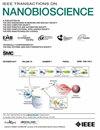Plasmonic Optical Fiber Based Continuous in-Vivo Glucose Monitoring for ICU/CCU Setup
IF 3.7
4区 生物学
Q1 BIOCHEMICAL RESEARCH METHODS
引用次数: 0
Abstract
This paper reports a sensor architecture for continuous monitoring of biomarkers directly in the blood, especially for ICU/CCU patients requiring critical care and rapid biomarker measurement. The sensor is based on a simple optical fiber that can be inserted through a catheter into the bloodstream, wherein gold nanoparticles are attached at its far distal end as a plasmonic material for highly sensitive opto-chemical sensing of target biomolecules (glucose in our application) via the excitation of surface plasmon polaritons. For specificity, the nanoparticles are functionalized with a specific receptor enzyme that enables the localized surface plasmon resonance (LSPR)-based targeted bio-sensing. Further, a micro dialysis probe is introduced in the proposed architecture, which facilitates continuous monitoring for an extended period without fouling the sensor surface with cells and blood debris present in whole blood, leading to prolonged enhanced sensitivity and limit of detection, relative to existing state-of-the-art continuous monitoring devices that can conduct direct measurements in blood. To establish this proof-of-concept, we tested the sensor device to monitor glucose in-vivo involving an animal model, where continuous monitoring was done directly in the circulation of living rats. The sensor’s sensitivity to glucose was found to be 0.0354 a.u./mg.dl−1 with a detection limit of 50.89 mg/dl.用于重症监护室/儿童重症监护室设置的基于等离子光纤的连续活体血糖监测。
本文报告了一种可直接连续监测血液中生物标志物的传感器结构,尤其适用于需要重症监护和快速生物标志物测量的重症监护室/重症监护病房病人。该传感器基于一根简单的光纤,可通过导管插入血液,在其远端连接金纳米粒子作为质子材料,通过激发表面等离子体极化子对目标生物大分子(在我们的应用中为葡萄糖)进行高灵敏度的光化学传感。为了实现特异性,纳米粒子被一种特定的受体酶功能化,从而实现了基于局部表面等离子体共振(LSPR)的靶向生物传感。此外,拟议的结构中还引入了微透析探针,这有利于长时间连续监测,而不会使传感器表面受到全血中存在的细胞和血液碎片的污染,从而延长了灵敏度,提高了检测限,而现有的最先进的连续监测设备可以直接在血液中进行测量。为了验证这一概念,我们在动物模型中测试了传感器设备对葡萄糖的体内监测,在活体大鼠的血液循环中直接进行连续监测。结果发现,传感器对葡萄糖的灵敏度为 0.0354 a.u./mg.dl-1,检测限为 50.89 mg/dl。
本文章由计算机程序翻译,如有差异,请以英文原文为准。
求助全文
约1分钟内获得全文
求助全文
来源期刊

IEEE Transactions on NanoBioscience
工程技术-纳米科技
CiteScore
7.00
自引率
5.10%
发文量
197
审稿时长
>12 weeks
期刊介绍:
The IEEE Transactions on NanoBioscience reports on original, innovative and interdisciplinary work on all aspects of molecular systems, cellular systems, and tissues (including molecular electronics). Topics covered in the journal focus on a broad spectrum of aspects, both on foundations and on applications. Specifically, methods and techniques, experimental aspects, design and implementation, instrumentation and laboratory equipment, clinical aspects, hardware and software data acquisition and analysis and computer based modelling are covered (based on traditional or high performance computing - parallel computers or computer networks).
 求助内容:
求助内容: 应助结果提醒方式:
应助结果提醒方式:


